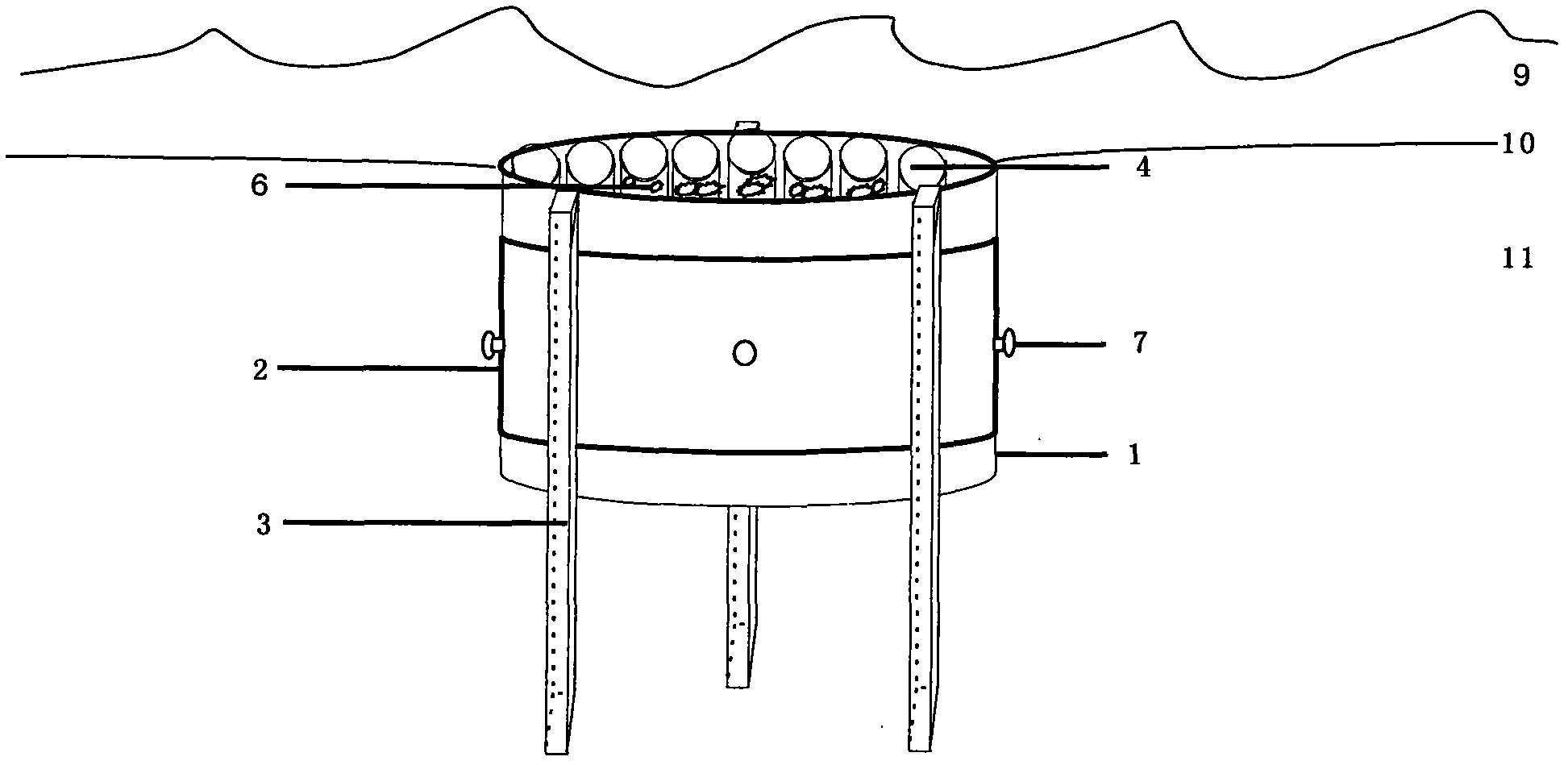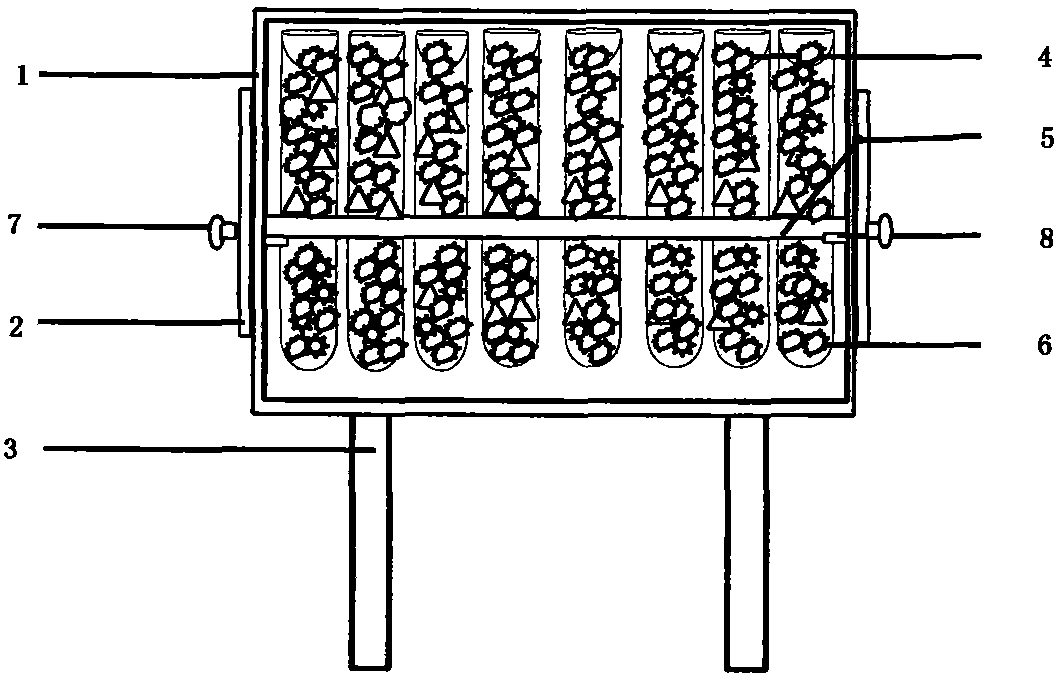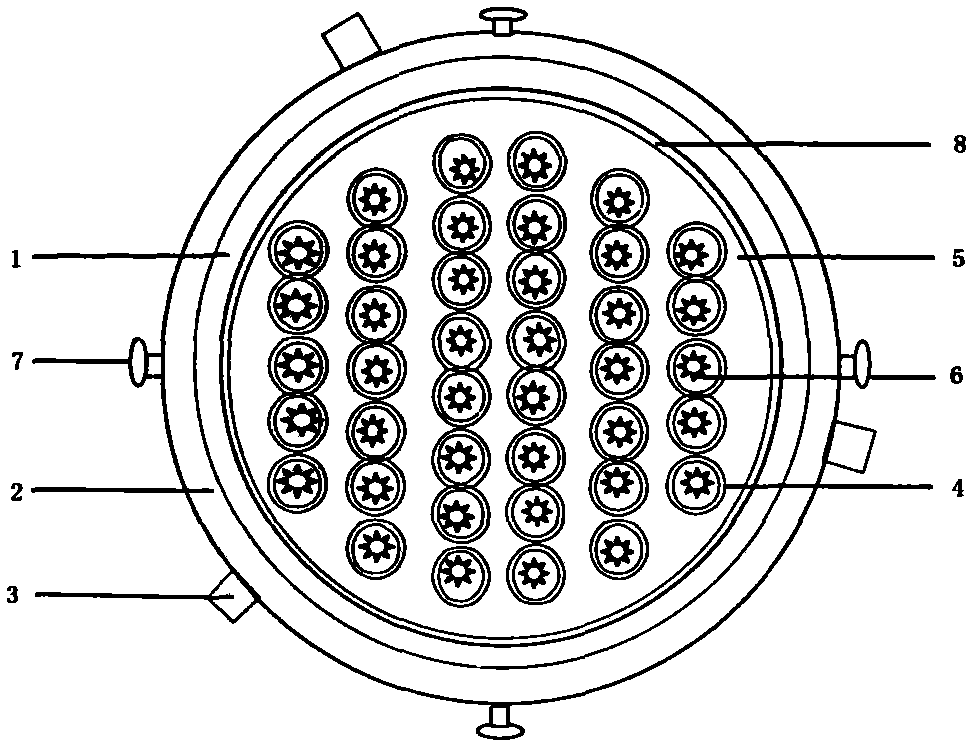In-situ time-phased sediment trap
A sediment and time-segmented technology, which is applied in the field of environmental ecology, can solve the problem of not being able to satisfy multi-time collection, and achieve the effect of avoiding disturbance
- Summary
- Abstract
- Description
- Claims
- Application Information
AI Technical Summary
Problems solved by technology
Method used
Image
Examples
Embodiment Construction
[0013] Below in conjunction with accompanying drawing, the present invention is further described:
[0014] like figure 1 and figure 2 As shown, the main body of the device includes four parts: a base 1 , a support system, a system of sampling tubes 4 and tube racks 5 , and a built-in fixing matrix 6 .
[0015] The base 1 is a cylinder with an open upper end, and a convex ring 8 is welded inside the middle height of the base 1 to carry the pipe frame 5; it is recommended that the base 1 be made of metal, and its recommended size is: the inner diameter of the base 1 is 50cm and a height of 23cm.
[0016] The support system is outside the base 1 and is composed of three vertical main rods 3 and a horizontal ring 2 welded together. The three vertical main rods 3 are distributed in an equilateral triangle and inserted into the water body soil to fix the base 1. Function, there are four screws 7 on the horizontal ring sleeve 2, which are used to adjust the relative position bet...
PUM
 Login to View More
Login to View More Abstract
Description
Claims
Application Information
 Login to View More
Login to View More - R&D
- Intellectual Property
- Life Sciences
- Materials
- Tech Scout
- Unparalleled Data Quality
- Higher Quality Content
- 60% Fewer Hallucinations
Browse by: Latest US Patents, China's latest patents, Technical Efficacy Thesaurus, Application Domain, Technology Topic, Popular Technical Reports.
© 2025 PatSnap. All rights reserved.Legal|Privacy policy|Modern Slavery Act Transparency Statement|Sitemap|About US| Contact US: help@patsnap.com



